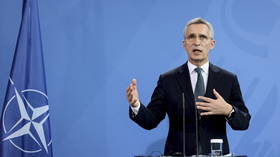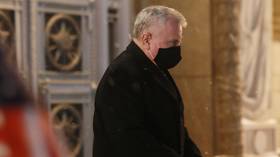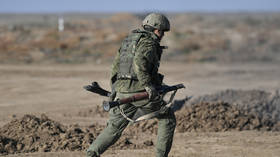NATO rejects Russia’s ‘red line’

NATO has said it “will not compromise” on potential expansion into Ukraine, Georgia, and other former Soviet republics, as this clashes with the “core principles” of the alliance, Secretary General Jens Stoltenberg told reporters on Wednesday.
The alliance’s response, which Stoltenberg said all 30 members agreed upon, was delivered to Moscow earlier in the day by the US ambassador, alongside Washington’s separate written note.
The US has asked Russia to keep the contents of its response private.
Stoltenberg, who was half an hour late to the scheduled online press event, outlined three basic topics that the NATO response touched on. One was re-establishing diplomatic ties between NATO and Russia, which he blamed Moscow for severing. The other was NATO’s readiness to “engage in dialogue” and “listen to Russian concerns,” while respecting the right of each country to choose its own security arrangements.
Russia should refrain from “aggression” aimed at NATO allies and withdraw from “Ukraine, Georgia, and Moldova,” where it is not wanted, Stoltenberg said.
Ukraine insists that Moscow is “illegally occupying” Crimea, which voted to rejoin Russia after the 2014 coup in Kiev. Russia has also recognized the independence of two breakaway regions of Georgia that Tbilisi tried to seize by force in 2008, and has maintained peacekeepers in the disputed Moldovan region of Transnistria since 1991.
The third area of possible cooperation listed by Stoltenberg involves “risk reduction” and transparency agreements on exercises, as well as arms control proposals that he argued have been so effective previously. Since 2001, the US has unilaterally exited the anti-ballistic missile (ABM) treaty, the Open Skies treaty, and the intermediate-range nuclear forces (INF) treaty, claiming without evidence that Russia was in violation of them.
“A political solution is still possible, but, of course, Russia has to engage in good faith,” Stoltenberg said, accusing Moscow of “aggression” against Ukraine since 2014.
Stoltenberg insisted that “NATO is a defensive alliance and we do not seek confrontation,” but repeatedly said that the alliance “cannot and will not compromise on principles” such as the right of every country to join. That decision rests solely with the applicant country and NATO members, now 30 in number, he said.
Asked about the reluctance that some NATO members have reportedly displayed in recent weeks, Stoltenberg maintained that “all allies are on board, all our allies have agreed” with the written response submitted to Russia. Croatia’s president has publicly said he would withdraw all troops from NATO in case of war in Ukraine, while Germany has reportedly denied the use of its airspace to UK weapons deliveries to Kiev.
Stoltenberg also reassured reporters that NATO has “plans in place we can activate on very short notice” if Russia “invades” Ukraine, with the lead element of 5,000 troops from the French-led NATO Response Force (NRF) on high alert, and the US assigning 8,400 troops on high readiness to the force as well. The Pentagon has previously said that some 8,500 US troops have been placed on heightened readiness status, but the decision had not been made to deploy them yet.














